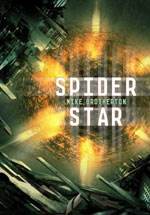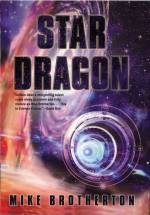Search
Synergies in Storytelling and Science
March 29th, 2008
It’s one of the proposal seasons in astronomy this month. There have been deadlines for applications to use the Hubble Space Telescope, the Chandra X-ray Observatory, and a dozen other ground-based telescopes (e.g., NASA’s IRTF, NOAO’s telescopes at Kitt Peak and Cerro Tololo, etc.). I also just got my CD filled with Hubble Space Telescope proposals that I’m responsible for reviewing in advance of a May meeting.
Writing an effective proposal is very much like writing an effective story. This is how I think about proposal writing and what I try to teach my students.
You want to have a hook. Within a few lines (typically in the abstract and/or the main body of the scientific justification), the reader should be intrigued into reading on. This can be done in a variety of ways, just as it may be done in a story. It can be the promise of an important new result, or the mystery of some new object, or an appeal to the big picture science underlying the proposal.
You need to get in the backstory. After the hook, the exciting bit, you should explain how we came to be where we are now and provide the reader with enough background to appreciate the state of the (sub)-field. While reviewers are expected to have some expertise, the proposer is expected to provide as much information as reasonable to bring readers up to speed. We’re too specialized in science for our own good in a lot of ways. It’s similar to thinking about readership in science fiction. A mass audience for a movie needs a lot of help getting up to speed if it’s an exotic setting or time, while sf readers are already familiar with a lot of concepts (space travel, robots, and more) and just need some hints. Some review panels are very specialized, while others are pretty general.
You need to have plot developments. Usually the background is historically in nature. A class of objects is discovered. They’re studied in various ways. Some questions are answered, but new ones are posed. The significance of those new questions is discussed and placed in context.
The climax is the actual proposal that promises how the new observations will tell the end of the story, or at least advance the story of our understanding.
Some proposals are surveys. Some concern fundamental physics. Some involve answering smaller questions, but in a final and convincing manner. Some, weaker ones in general, are considered fishing expeditions where the questions aren’t well posed, but such exploratory observations are required in order to pose better questions. In the same way, some stories are comprehensive with multiple points of view trying to fully explore some situation. Other stories are fundamental, attacking the big questions of the human heart. Others try to solve smaller puzzles in the tiny corners that are appropriate for short stories. There are rambling, ambitious stories that explore multiple avenues but don’t have well-defined themes since life is complicated.
There’s also a technical feasibility section that is analogous to getting the science/world right in a story. Can the telescope/instrument combination proposed actually make the observations that are required to answer question posed in the hook?
Proposals are short, with limited wordcounts, and the text must be lean and cut to the bone. Wishy-washy qualifiers needed to be excised whenever possible without being untruthful or too misleading.
Like stories, there are no real rules, just rules of thumb. Anything that works, works. You can start with the ending, start in the middle, get away with infodumping if well done and brief, etc. More deviations from the standard rules will win some fans, but risk losing others who aren’t as open-minded about approach. Sometimes the name on a story creates a positive or negative biases with particular readers, and the same is true with proposals. Reputations precede us, and it’s a small world.
Finally, and this is a scary thought to me on several fronts, scientists reviewing proposals are more like slush readers at magazines rather the readership of those magazines. When you’re staring at 80 proposals that need discussion and ranking in a two-day meeting, the initial reaction is critical. Not everything gets scrutinized as carefully as it should be, and a weakly written proposal lacking a hook or clear writing is more likely to result in a cursory pass and a low grade.
I have one more proposal to finish this month, due on Monday. I’ve already changed the story twice this week, when the feasibility didn’t work out as originally planned. My particular challenge with this one is that it’s of the more exploratory nature. Its strength involves the fact that it will be a first, but that’s also its weakness — I don’t know for sure what we’ll find in order to build a case that well-defined questions will be answered. I’m going to have to focus, and build a story, about what’s the most scientifically interesting issue I can address with the new observation. I’m going to start by trying to imagine the most interesting paper I could see myself writing with the data in hand, and work backwards. I’ll have a one-paragraph abstract, a one-page scientific justification, a one-page technical feasibility, and a couple of pages for supporting pictures and references. Tough to do, but that’s what the competition has, too. For Hubble and Chandra you get to write short stories, but for most ground-based telescopes it’s worse: it’s writing short shorts.
You can follow any responses to this entry through the RSS 2.0 feed. You can leave a response, or trackback from your own site.

